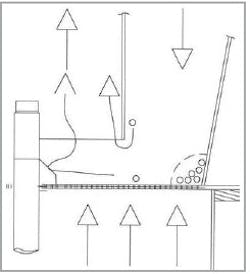Operating fluid bed dryers today still involves more art than it does science. Basically, an operator looks through a sight glass and manually controls the process, says Todd Pugsley, professor of chemical engineering at the University of Saskatchewan (Saskatoon).
Scale-up is even more problematic, he says, since what happens at the benchtop level is very different from what happens during full-scale production. Patterns within the vessels change, he says. And those changes ultimately affect product quality; larger granules can be segregated or finer granules entrained. Highly potent drugs or protein-based therapies are at greatest risk for quality problems.
Pugsley and his team have been studying the gas-particle and particle-particle interactions of fluid bed drying since 1998. Theyre using new sensors, tomography and high-speed photography to capture the dynamic behavior of particles in the dryer. Tomographys nonintrusive, and you get a clear picture of whats going on, Pugsley says.
In a previous project, they had used a piezoelectric sensor to measure pressure fluctuation within a dryer. They replaced the product bowls viewing window with an acrylic insert threaded so that the transducer could be mounted within it. They then collected data for both a dry and a wet bed of granules, with the wet bed moving from 33% wt. to 4% wt. moisture.
Chaos analysis, in the form of the S-statistic method, developed by J.R. van Ommen of the Technical University of Delft, was then used to analyze data. Hydrodynamics varied depending on the amount of moisture present. When you take wet granules in a fluidized bed and start to dry them, the behavior of gases and the solid flow patterns change significantly, says Pugsley. Ultimately, knowledge gained will lead to automatic control systems, he says.
Not only drug manufacturers are refining visual hydrodynamic measurement techniques. The fluidized bed equipment maker Glatt used fiber optics and high-speed photography to characterize the Wurster coating process and pinpoint problem zones, to optimize it for tablet coating. Research ultimately led to the design of a new insert (see "Insert Improves Wurster Coating for Tablets, Particles") that improves coating uniformity.
Academic research promises to raise the level of process understanding. Manufacturers will be able to show FDA that they understand how changes in gas velocity and changes in the humidity of incoming air affect the process, as well as product quality, says Pugsley. Research in this subject is also ongoing at the University of Calgary, the City College of New York, and Rutgers University.





